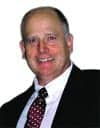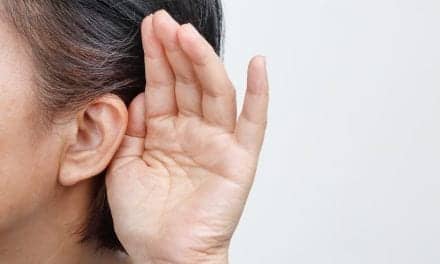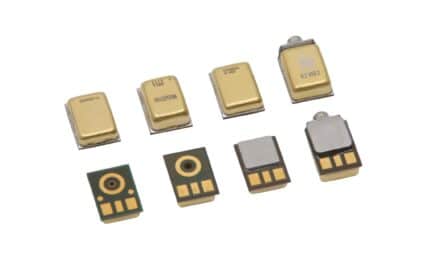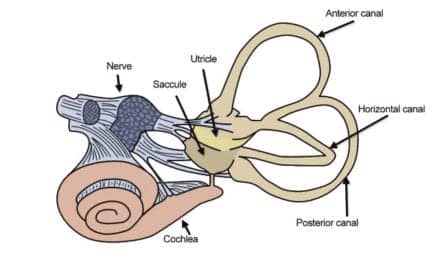To ensure the quality of their testing and fitting equipment, the crew at Audioscan designed their own dedicated hardware system to accommodate the company’s software.

Founded by former Linear Technology engineers Bill Cole, BASc, PENG, and Jim Jonkman in 1983, Audioscan, a division of Etymonic Design Incorporated, originally functioned as a consulting company. By 1986, with the help of a business consultant, the two men subjected it to a business analysis and decided that they should be designing equipment instead of offering advice. “[The consultant told us,] ‘as consultants and custom design people, you get all the hard jobs, and you never get a chance to recover from your mistakes, because everything’s a one-shot deal; if you really want to have a future, you should be designing something that you can manufacture and make a living at,’” says Cole, who currently serves as Audioscan’s president. “So we took him seriously and we did a study to see what areas we thought we could apply our expertise to; we came up with portable real ear measurement equipment as a real market of opportunity. It was actually a conscious decision on our part. We identified several opportunities, and this one looked like the best one. We have no regrets.”
The move was a natural one for Cole. While at Westinghouse Canada, he helped design one of the first hearing aid microcircuits. “My background was in microelectronic design,” he says. “At that time, Westinghouse Canada had acquired the rights to produce a hearing aid integrated circuit for Zenith. I ended up with the job of designing a microcircuit for hearing aids that was the very first one that had compression. It was kind of the first of the next generation of integrated hearing aid circuits.” Eventually, Cole went to work for Unitron as its first engineer and research and development manager and became involved in hearing aid design.
A Custom-Designed System
The Audioscan testing and fitting equipment was built from the ground up. Instead of relying on platforms built by other companies, Cole and his colleagues at Audioscan created their own dedicated hardware system, which was made to accommodate the company’s software.
Originally designed in the 1980s, the Audioscan hardware platform has changed little, while the software has been updated several times. The original product, the RM500, is still available. A new device, the Verifit, was introduced in 2001. Cole credits the reliable hardware system as part of the reason the company has been successful. “One of the things that we have done is different from the approach of some of the people in this industry; they have the computer do everything and basically just become software developers,” he says. “We have gone the other route after studying the situation fairly well, and we have put a lot of effort into developing good hardware that is totally dedicated. Although there may be a PC inside, it is not an off-the-shelf PC that’s been custom programmed. Everything is custom developed and designed, so our software development effort is different than others in that it is dedicated totally to our hardware. And the hardware issue for us is actually a fairly major design element. It takes a lot of effort to design a dedicated piece of hardware for this market.”
This hardware-heavy ap-proach gives the company certain advantages. “We find the benefits are that if there is a problem, we know it’s our problem,” says Cole. “If there’s a PC involved, it’s a never-ending battle to keep up with the problems that are introduced by hardware changes that you have no control over or somebody loading software that causes your software to malfunction. That was one of the main reasons that we decided we wanted to have total control over the software as well as the hardware.” Because the equipment is Audioscan’s and not another company’s, if the problem is hardware-related, the company can have it repaired within 24 hours.
Much of the manufacturing, except for key components such as the unit’s microphone, is contracted out, though Audioscan does all of the final assembly at its Dorchester, facility.
Having its own hardware is one of the ways that Audioscan stands out from the pack, says Cole. “We are also one of the few that has not gone the route of making the PC do everything, and we have invested a great deal of time and effort and money in building dedicated equipment, because we believe that ultimately that is the best route to go,” he says. “It eliminates so many problems for the user. Most of our users are not big operators. They’re typically one- or two-person offices, so they don’t have an IT person around to take care of their PC problems. They really don’t want to be dealing with the problems of software compatibility in PCs. We did a pretty [thorough] study of this and made a deliberate attempt to go the route of dedicated equipment, and we believe ultimately that is the best for us and for our customers.”
Though the hardware is reliable, that does not mean it is indestructible—even if its RM500 unit has been run over by cars, dropped down stairs, and submerged in six feet of water and has remained operational—necessitating a support service for the hardware.
The company operates a network of 25 to 30 special dealer instrument offices, but, Cole says, Audioscan rarely needs to use them, because, in some cases, it takes longer to get repairs through a local service shop. Instead, about 80% to 90% of customers call on the product phone line. Many of these problems can be solved on the phone. If they cannot and if the machines are still under warranty—Audioscan offered the first 2-year warranty for its RM500 in 1997—the malfunctioning part can be shipped overnight to the company, which will turn it around within a day and have it back in the dispenser’s office ready to use.
Support is more than fixing things when they go wrong. The company’s local representatives provide one-on-one training and regional workshops for Audioscan’s customers.
Indestructible hardware and good support are only part of the equation as to why Audioscan has been able to build a niche in the testing and fitting market. The other part is its products’ ability to help dispensers’ bottom line.
Cole says that the Audioscan fitting systems, including its newest, the Verifit, has a definite business benefit for its dispenser customers. “Definitely you improve satisfaction, and part of that process is first of all it lets you see what’s happening so that you optimize the adjustment,” he says. “But the other thing that it does is allow you to demonstrate to the client what you’re doing.”
While Audioscan has established itself at the head of the fitting pack, Cole is not coasting on the company’s laurels. Instead, he is keeping the company ahead of the curve by making sure Verifit is able to fit hearing aids just as well in the digital age. Even as more and more manufacturers move into the digital realm, Audioscan has not had to change much to keep up, because the hearing aid signal has essentially remained unchanged, says Cole. “Starting back in the early 1990s, we developed special variations of our test signals to try to simulate speech,” says Cole. “In those days we were trying to get a more accurate indication of the amplification of speech for analog hearing aids. We found that when digital technology came in, those signals worked just fine for those, and they still work quite well for most of them. So, I guess we were ahead of the rest of the pack.”
One way Audioscan has stayed ahead of the pack is in the use of speech as the test signal in the Verifit system. “We have digitally recorded speech samples in the machine that have been spectrally shaped, and have been carefully chosen to be representative of average talkers,” says Cole. “When we analyze those signals, we actually use a model of the way the hearing system works. So that when you look at the amplified speech signal, you can compare it directly with someone’s measured hearing threshold or measured most comfortable or uncomfortable level.”
The next step for Audioscan has more to do with software than hardware. “I think that one of the exciting things with our new machine—the Verifit—is the new software we’re introducing for it, which for the first time has a really neat way to test directional hearing aids in a real room in real time, so that you can actually see the adaptive directional characteristics of the hearing aid,” says Cole.
The new software will enable the dispenser to set the configuration for the patient in their office, as well as allow test results to be scanned and saved via barcode, making it easier for the dispenser to access that information during future visits.
Chris Wolski is associate editor of Hearing Products Report.





